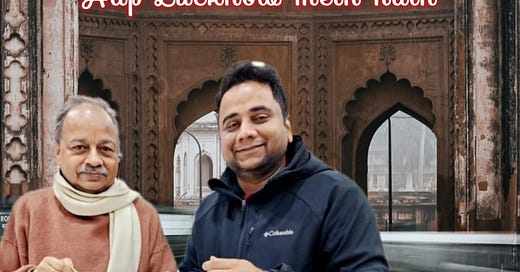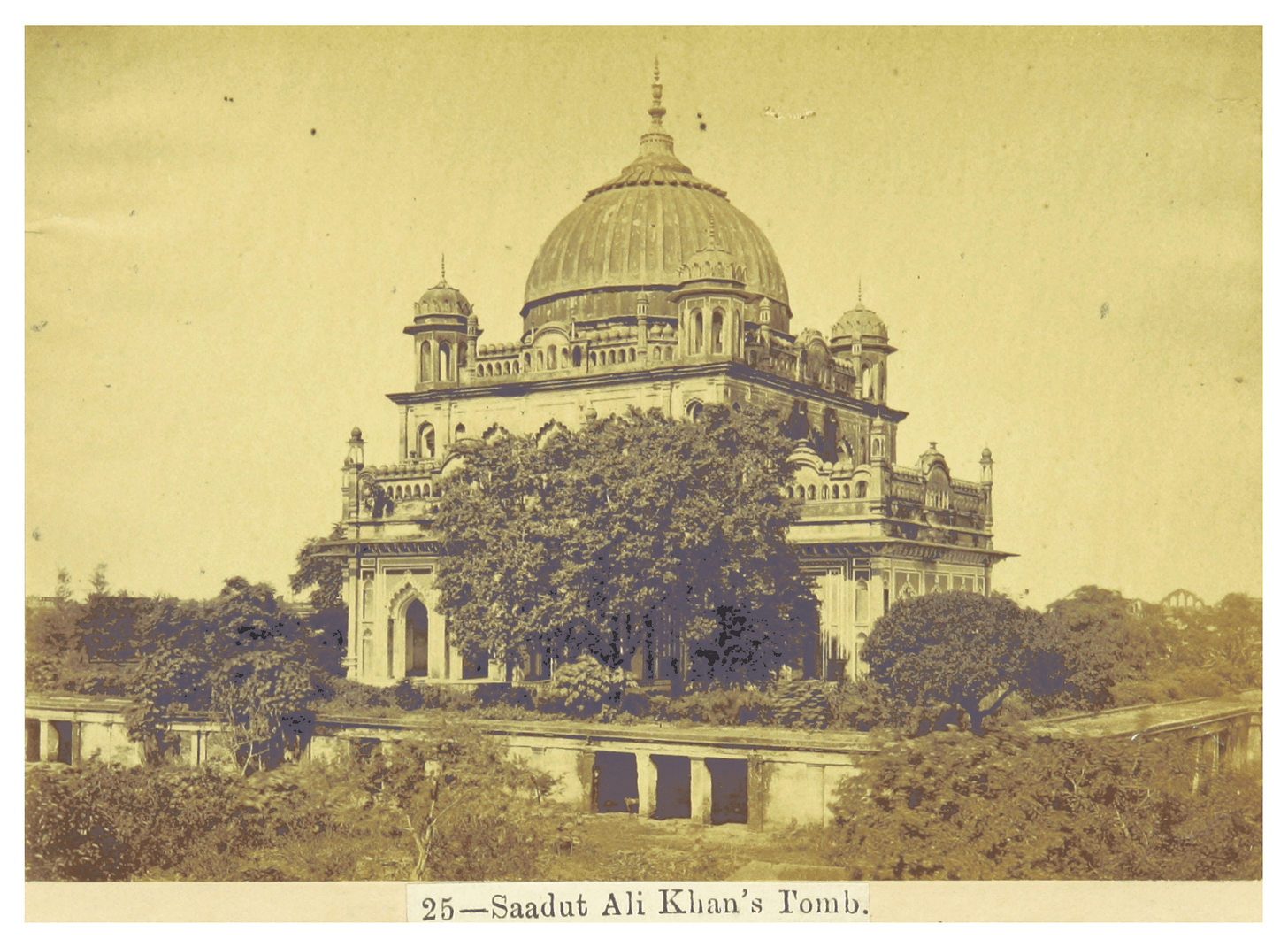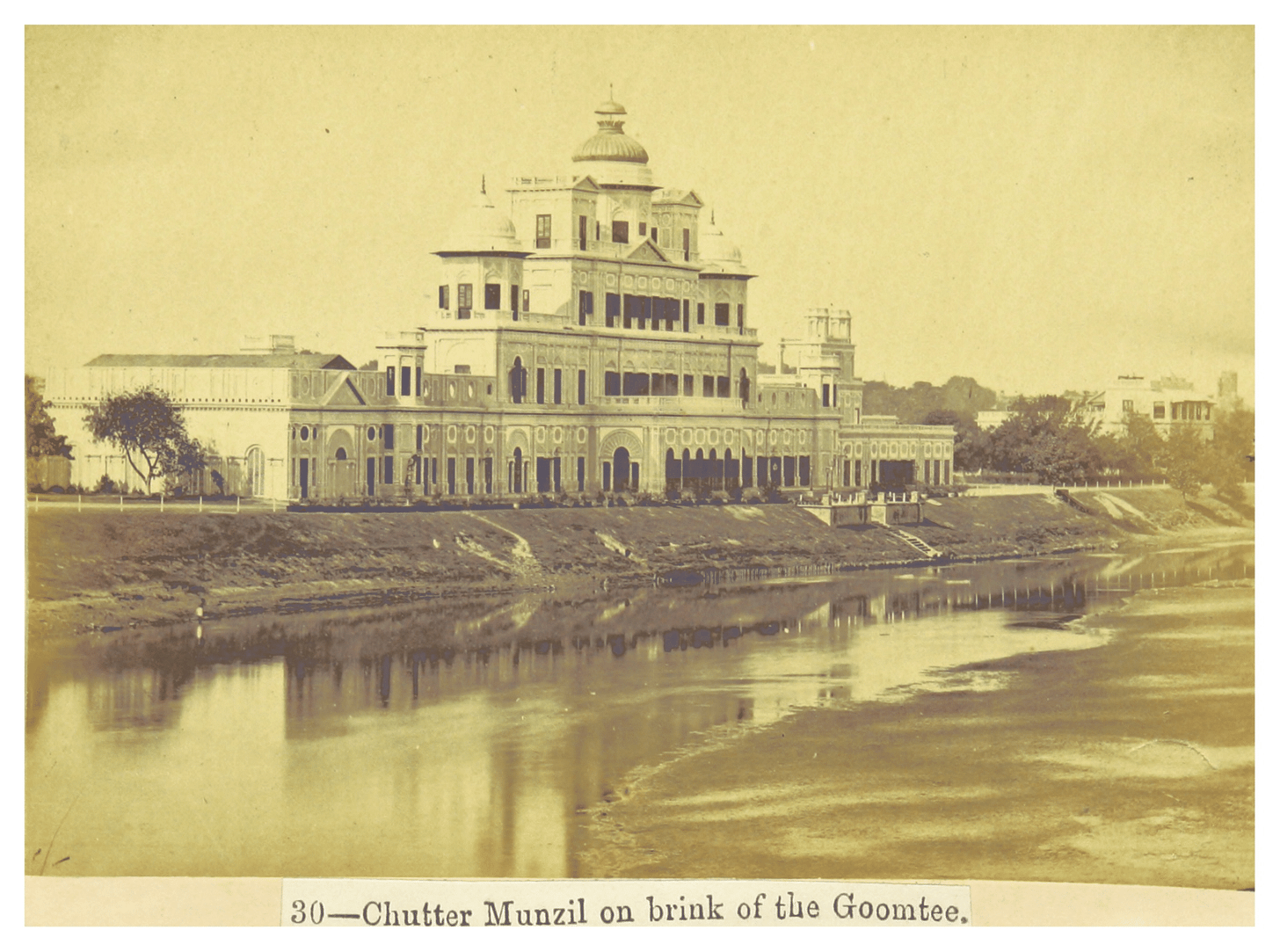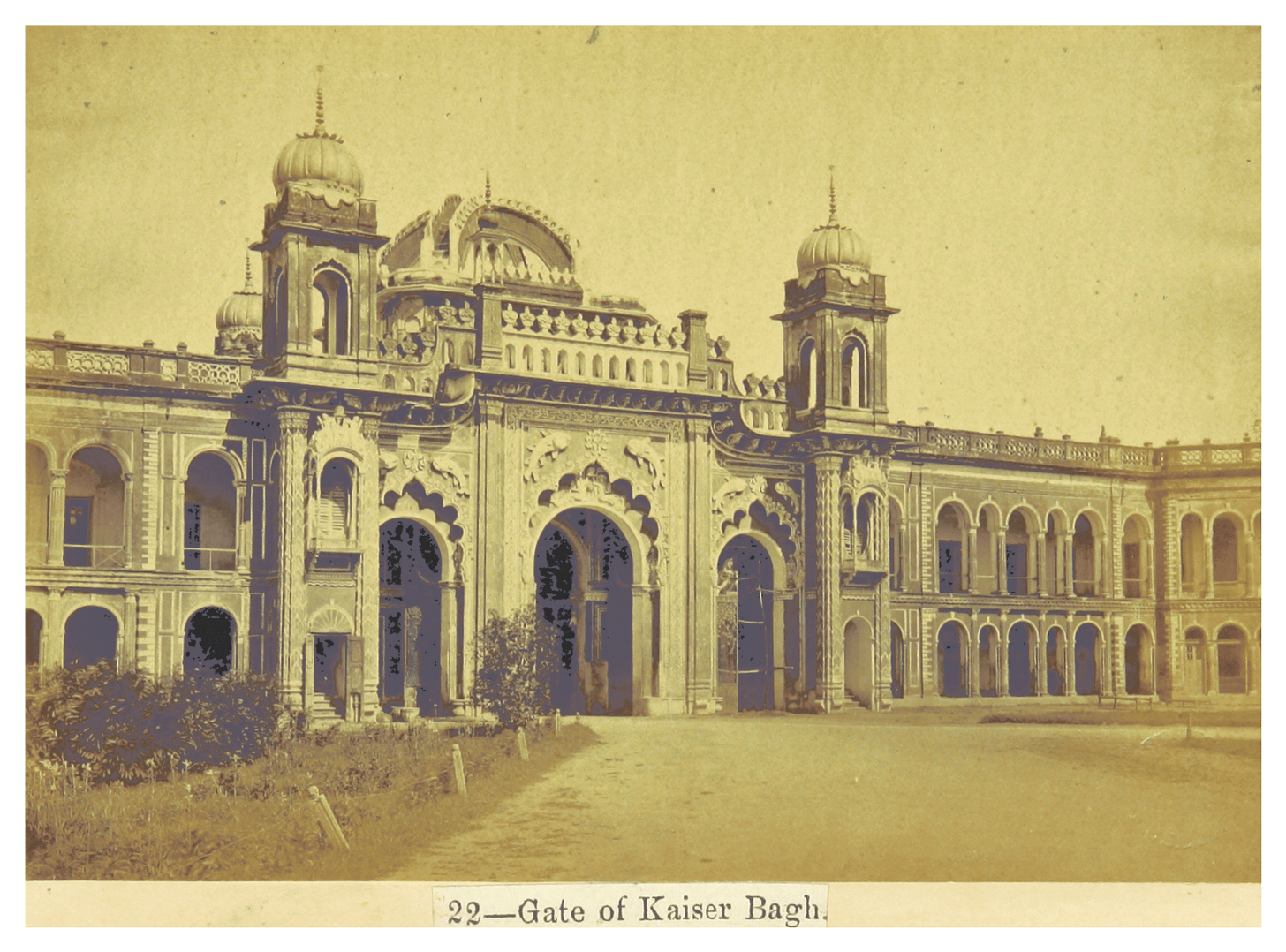Lucknow's Nawabs and Kebabs: Stories of History, Culture and Cuisine
Walking the streets of Lucknow with the Srivastavs
You know that one thing your mom keeps asking for, over and over? Well, for me, it’s been, "Take me to Varanasi!" After what feels like the hundredth time, I finally caved and booked the tickets. While I was busy figuring out the ins and outs of the holy city, I couldn’t help but think, 'Lucknow’s not too far; why not make it a part of the trip?' And then, just as I was dreaming of kebabs and nawabi charm, our latest podcast episode sealed the deal—Lucknow is happening! Tickets? Already booked, of course.
Guests in this episode are veteran locals - Mr. A.K. Srivastav and his son Vaibhav. Srivastav uncle (as we dearly refer to him) has lived a rich life serving the Indian Railways. He’s shared some legendary tales of his times in the Railways in this episode! From the trials of working in steam engine trains—having to scrub down before hugging his family—to entertaining tales of how he shared a coach with Hema Malini, his stories are pure gold. My personal favorite is when he recited a haiku he composed while watching a steam train glide through foggy winter mornings:
Safed chadar odhe,
Soo rahi hai nadi,
Thand jo bahut hai.
While Mr. Srivastav takes us through Lucknow’s rich history, Vaibhav tells us exactly where to eat, what to shop, and what not to miss.
So, here’s the perfect itinerary to make the best of your (and my) Lucknow trip! You should be able to cover the following 7 destinations in 1-2 days (depending on how fast you walk and how much you like to eat!). Quick overview of the itinerary
Day 1 History trail - Akbari Gate, Bada Imambara, Chota Imambara, Rumi Gate
Day 1 lunch break - Tunde Kababi, Raheem’s, roadside options in the Chowk
Day 1 afternoon history walk - Hazratganj
Day 1 wrap-up with food walk near Hazratganj
Day 2 history trail - Husainabad Chowk, Kaiserbagh
Day 2 chill-time exploring the city through its parks
Tell me a little bit about Lucknow’s nawabs
Nawabi culture flourished in Lucknow due to its unique history. In the 18th century, after the decline of Mughal power, regions like Hyderabad in the South and Murshidabad in the East became almost independent. Awadh, which includes present-day Lucknow, was at the heart of this shift. Following Aurangzeb’s death, chaos took over the Mughal empire. Saadat Ali Khan, appointed as the subedar of Awadh, eventually declared the region independent, marking the rise of Nawabi culture with the capital alternating between Faizabad and Lucknow.
Let’s get to the itinerary - Day 1
1. Akbari Gate: During the later years of Akbar’s reign, Jawahar Khan, the Subedar of Awadh, initiated the construction of the Akbari Darwaza in honor of the emperor. Like many, he sought to please his ruler by building something in his name. Although Akbar never visited Lucknow, he left a mark on its history by funding a yagna performed by Brahmins, a ritual for blessings before embarking on important tasks. We begin our Lucknow journey at this iconic gate.
2. Bada Imambara: We all know that Lucknow is famous for its Imambaras, but what exactly are they? The word ‘Imambara’ comes from ‘imam’ (religious leader) and ‘bara’ (house), meaning the ‘house of Imams.’ For Shia Muslims, it refers to places dedicated to figures like Imam Ali, Imam Hassan, and Imam Hussain, who are key leaders in Shia Islam. These spaces are used to organize majlis, gatherings where people come together to mourn and reflect, especially during the month of Muharram.
Muharram is a significant time for Shias as they commemorate the Battle of Karbala, fought in 680 AD, where Husayn ibn Ali, the grandson of Prophet Muhammad, and 72 of his followers were martyred. The purpose of these gatherings, and Muharram itself, is mourning.
Imambaras, or ‘Azah khanas’ (houses of mourning), are the focal point of Muharram rituals. The word ‘Azah’ means mourning, and Imambaras are specifically built for this purpose, providing a sacred space for paying respects and reflecting on the sacrifices made at Karbala.
The Bada Imambara holds three key aspects:
Religious significance: As discussed earlier, it's a place for Shia Muslims to gather and mourn, especially during Muharram.
Historical significance: Built in 1784 by Nawab Asaf-ud-Daula, the Imambara marked the rise of Nawabi culture in Lucknow. The Nawab focused on creating magnificent structures to solidify his legacy. Both Asaf-ud-Daula and the architect, are buried within the complex.
Architectural Significance: The Bada Imambara is a true structural marvel—the second largest in the world, with a grand hall that stands without any beams or iron support. Imagine half-bangles coming together to form arches, much like an intricate arch bridge. These interlocking arches create a unique vault structure, entirely free of European influence. This architectural ingenuity also led to the creation of the famous Bhool Bhulaiya (labyrinth). Hollow walls and passageways were crafted to lighten the roof's load, accidentally forming a maze. Today, it’s a must-see attraction, with guides leading visitors through its winding corridors.
3. Chota Imambara: Just a few steps away lies the enchanting Chota Imambara, often remembered alongside its grander counterpart. Commissioned by the notable Nawab Muhammad Ali Shah, it is sometimes referred to as the "Palace of Lights" in British tourist literature, thanks to its stunning Belgian chandeliers and an array of exquisite crystal lamps that create a mesmerizing ambiance.
As you step inside, you’re greeted by the soft glow of these sparkling lights, especially during the mourning period of Muharram, when the entire place is illuminated, casting a magical glow over the intricate architecture.
Chota Imambara is also renowned for its unique calligraphy and its five grand doors. Each of these doors holds significance, reflecting the concept of Panjtan, which honors the five revered figures in Shia Islam: Prophet Muhammad, his wife Khadijah, his daughter Fatimah, and his son-in-law Ali.
4. Rumi Gate: A symbol of Lucknow, the Rumi Gate is iconic and instantly recognizable, featured in everything from local memorabilia to the Lucknow Metro's logo, which resembles its design. This grand entrance, reminiscent of a tunnel on an expansive road, welcomes visitors with its beautiful architecture, complete with nooks, crannies, and impressive pillars.
The Rumi Gate leads into a bustling area that includes significant sites like the Asifi Imambara and a large stepwell, along with several mosques.
Food and Shopping Break: After exploring the Imambara, immerse yourself in the culinary delights near Akbari Gate.
Start with Tunde Kababi, famous for its melt-in-your-mouth kebabs. Interestingly, the name ‘Tunde’ refers to someone with one hand, which was the case for the founder. Instead of shying away from it, he turned it into the brand's identity. Over a century old, this iconic eatery doesn’t need a big signboard— apparently we just have to follow the irresistible aroma! It can be paired with the sweet naan called Sheermal, which can also be enjoyed as dessert. Legend has it that when offered to Ghazi-ud-Din Haider, he took just a bite. So, Sheermal had it’s own special version with a corner cut in his honor.
Nearby, Raheem’s serves up Nihari, a slow-cooked mutton dish typically enjoyed at breakfast but available all day. It’s traditionally served with kulcha.
In Chowk, vegetarian options abound, including Rabri Khoya and Kale Gajar ka Halwa along with . For biryani, head to Idris, a century-old establishment famous for its Yakhni Pulao.
While in Chowk, experience the unique Kashmiri Chai—a pink, slightly salty tea. Vaibhav feels it’s a must try because of it’s slightly weirdly good taste.
For shopping, Chowk offers exquisite chikankari textiles, silver jewelry, and traditional perfumes. We can engage with artisans and explore local temples, while we are here.
5. Hazratganj: Next, we’ll explore Hazratganj, which is linked to the 1857 Mutiny. Henry Lawrence, the Chief Commissioner, witnessed a poignant moment when a young boy threw a clod of earth at him, symbolizing the growing discontent against British rule. This act foreshadowed the impending uprising, and Lawrence documented it in a letter to the Governor-General, sensing the unrest brewing. Imagine the courage of that boy, challenging an empire with just a clod of earth!
The road of Hazratganj has a fascinating history. Built around 1810, this broad road connected Dilkusha to the Residency, serving as a crucial route for the Nawab and British residents. When a new regiment arrived, they were not allowed to enter Lucknow directly. Instead, they stayed at Bibiapur Kothi for the night. The following day, the Nawab would honor the resident by escorting them on the same elephant to the Residency.
Along this road stood two iconic Grecian arches, and notable kothis like Noor Baksh, now housing district administration, and Kothi Hyatt Baksh, the former governor's residence. Other kothis, such as Kankar Wali and Anarkali, once dotted the area, though many have been replaced by modern structures. Old photographs and historical accounts preserve the memories of those who once inhabited these spaces, weaving a continuous narrative through time.
Hazratganj combines two words: ‘Hazrat,’ a title of respect for Nawab Asaf-ud-Daula, and ‘Ganj,’ which originally referred to a grain market. Asaf-ud-Daula is also buried at Sibtainabad Imambara in Hazratganj. On the main road, he constructed the impressive Begum Kothi complex for his wives and other residents.
During the 1857 Mutiny, Begum Kothi became a battleground where freedom fighters clashed with British forces. Bahadur Shah Zafar, the last Mughal emperor, surrendered to Mr. Hudson, along with his family. Tragically, after their surrender, Hudson ordered them to disembark, stripped them of their ornaments, and executed them—an act deemed cold-blooded murder rather than wartime violence. Hudson later claimed it was necessary due to an imagined threat, which only added to his infamy. He was ultimately killed in the fierce battle at Begum Kothi and is buried at La Martiniere.
After the British victory in 1857, they demolished about one-third of Lucknow, impacting areas like Kaiserbagh. However, Begum Kothi was captured rather than destroyed, with its many kothis repurposed for European shopkeepers. By the 1870s and 1880s, this area became a bustling market for Europeans.
The first Catholic church, established around 1862, was initially a converted imambara—Sibtainabad Imambara—which served as a church for several years. Notably, Lord Canning, the Governor-General, conducted a service there. Eventually, Saint Joseph's Church was built, though it later collapsed and was rebuilt within a year. As the area evolved, it became home to several Anglican churches, including Christ Church, transforming into a fashionable market district.
In the 1920s, the architecture reflected Victorian and Georgian styles, particularly along the road once known as Strand Road, reminiscent of the Mall roads in British cities.
Walking through this area today, you can still feel the echoes of Victorian charm, with many shops showcasing colonial arcades, arches, and even a quaint clock tower.
Food walk at Hazratganj: Start your food journey at Shukla Chaat, right next to Christ Church, where one dedicated vendor serves up delightful pani puri and mutter chaat—a must-try!
A short walk brings you to Motimahal, famous for its unique Tokri Chaat (or basket chaat)—an edible basket made from fried aloo, served generously enough for 2-3 people. It’s a creative twist on sustainability!
Next, don’t miss Sharma Ki Chai, known for its round samosas that resemble kachoris. Pair your chai with these unique treats for a true local experience.
For dessert, visit Rama Sweets, celebrated for its kulfi, kachori, and the delicious makhan malai, especially popular in the winter mornings.
As you explore, check out the Kashmir Emporium and the Gandhi Khadi Ashram for affordable local goods, along with modern shops and chikan stores.
Wrap up your culinary adventure at Burma Bakery, a charming spot known for its biscuits and nankhatai. Established by bakers who learned their craft in Burma before returning to Lucknow, this bakery carries a seal of authenticity that reflects its rich history.
6. Husainabad Chowk: Next day, at Husainabad Chowk, we delve into the tumultuous history of Lucknow.
One notable site is Farhad Baksh Kothi, built in 1781 by the Frenchman Claude Martin. Remarkably older than the Bada Imambara, this structure offers a glimpse into a time before the French Revolution and after American Independence. Its unique architecture features turrets, a moat, and a drawbridge. Ingeniously designed, the kothi was situated along the river—during monsoon season, the lower two stories would flood, prompting occupants to retreat to the upper levels. In the summer, as the waters receded, the cooler lower floors provided a refreshing retreat.
The kothi changed hands after Claude Martin's death in 1800, eventually purchased by Saadat Ali Khan. It remained a Nawab residence until the time of Wajid Ali Shah. When the British captured it, they removed the moat and drawbridge for easier access. Nearby, Chattar Manzil is famous for its golden umbrella atop the structure, where queens and courtiers resided.
Following India's independence, the building was repurposed as the Central Drug Research Institute under the Council of Scientific and Industrial Research. Today, it’s maintained by the ASI, allowing visitors to explore both Farhad Baksh Palace and Chattar Manzil.
In front of this historic complex lies Lal Baradari, which once served as a ceremonial crowning site akin to Westminster Abbey. Today, it hosts painting exhibitions, seamlessly blending history with contemporary art.
7. Kaiserbagh: Moving from Husainabad Chowk, we arrive at Kaiserbagh, which was once home to a magnificent palaces, many of which were demolished by the British.
In the aftermath of the 1857 uprising, tensions were high. The British, feeling embittered, looted extensively in the area. Despite this, Kaiserbagh retains its charm, featuring notable structures like Safed Baradari. This elegant pavilion once boasted a dome adorned with silver filigree, although that embellishment is no longer visible.
Today, Safed Baradari serves as a venue for various heritage festivals, surrounded by expansive lawns that reflect the area’s historical grandeur.
From here, we transition to the Regency, which we’ll explore separately, as it stands apart from our current focus. Spending half a day in Kaiserbagh allows for a deeper appreciation of its surroundings before heading to Aminabad.
While the famed Chaulakh ki Kothi, known for its fragrant history, has been demolished, the gates still stand as reminders of its past. Interestingly, the name ‘Chaulak’ means ‘four lakhs,’ referencing the amount the barber of Wajid Ali Shah is said to have paid for the kothi!
Special Mention:
Tip: Buy tickets in advance for the Imambaras and take a rickshaw to Chowk for an authentic local experience! If you’re unsure where to stay, consider staying near Hazratganj, the heart of the city.
Parks: Every city claims to have its own version of a marine drive, and Lucknow is no exception. While it may not be officially named the "marine drive," the road alongside the Gomti River offers beautiful views and a pleasant atmosphere, especially in the evenings.
Traveling from Chowk to Hazratganj, you’ll cross the iconic bridge, surrounded by lush parks and greenery. Notable spots include Buddha Park, home to a large rotating globe once open to the public, perfect for picnics and leisurely strolls. Nearby is Begum Hazrat Mahal Park, named after the fierce queen who fought the troops during the 1857 uprising. This park features historical structures, reminiscent of Delhi’s Lodhi Garden, allowing visitors to walk through a blend of heritage and nature.
Lucknow is also home to Janeshwar Mishra Park, known as Asia's largest park, less than ten years old, but, boasts stunning landscaping, a serene lake, and thousands of trees.
While I tried to highlight some of Lucknow's treasures in this blog, there’s so much more to uncover—Aminabad, the stories behind its mouth-watering delicacies, and countless other fascinating tales.
Tune in to the podcast for all the hidden gems and trivia because, who knew that Lucknow—a city often overlooked in the top travel lists—holds such a treasure trove of history, gastronomy, and shopping? Further, the conversation in the podcast exudes a warmth and camaraderie between the father-son duo, that make the tales heartwarming! Even if a trip to Lucknow isn’t on your horizon, the podcast offers an audio journey through its lanes, almost like being there in person. But, if you do get the chance, plan a visit for at least a weekend—or better yet, a few extra days—to fully immerse yourself in its rich heritage and culinary delights.
Links:
Follow Mr. A.K. Srivastav on Facebook
Vaibhav Srivastav on Facebook | Instagram | LinkedIn
Vaibhav's book: ‘Sea of Stories: Mumbais and Bombays’ on Amazon
Vaibhav's podcast episode on Mumbai: Spotify












